FAQ
Frequently Asked Questions from our travellers

Frequently Asked Questions from our travellers
It’s probably the hardest question to answer well. There’s certainly no bad time.
The most popular time is from mid-December to the end of January and these voyages sell out first (sometimes 18 months in advance).
The below are pages that summarise the benefits/differences of travelling during the Antarctic season;
Early (Late October, November & early December)
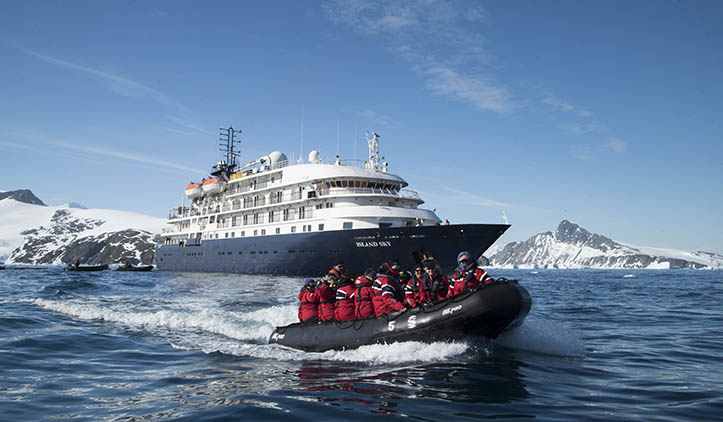 Our advice is to think about what’s most important to you
Our advice is to think about what’s most important to you
1. Question: Do you want to maximise your time off the ship exploring in zodiacs or going ashore?
Answer: Likely look at Expedition or Expedition-Luxury ships – certainly look at ships with closer to 100 guests.
2. Question: How important is your cabin, cuisine and on-board facilities;
Answer: If you like your creature comforts then look at Expedition-Luxury or Luxury ships.
3. Question: Where do you want to go – the voyage itinerary
Answer: Most ships offer a range of itineraries from 10 to 22 nights
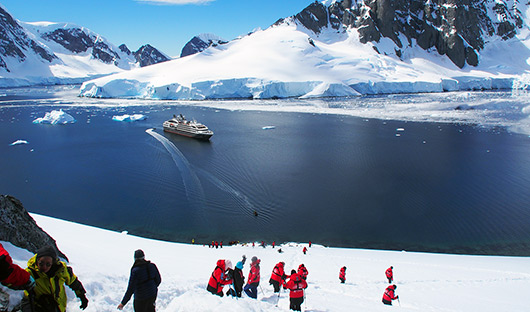
Antarctic Peninsula Cruises 9-11 night voyages
Antarctic Circle Cruises 11-13 night voyages
Antarctica, Falklands & South Georgia 16-23 night voyages
Fly-Cruise (Flying from Punta Arenas to King George Island and then join ship) 6-8 nights
There are other itineraries offering different combinations and our suggestion is tell us what you want to see/include and we’ll find the itineraries that include what you want.

4. Question: What’s your budget?
Answer: In general terms Expedition or larger ships will offer lower prices.
Expedition ships are generally less costly to operates and whilst the cuisine is good it’s not gourmet. Larger ships also offer good value as with 200 guests to spread fixed costs (fuel and ship) it is possible to offer value.
Luxury ships with large cabins and a high level of service and inclusions are very likely to cost the most.
Itinerary duration as well as time of the year will also have an impact on the price.
All of the above will affect which ship is best suited to your needs.
To try to assist you in understanding the options as well as how ship style effects delivery we have divided the ships into three ‘styles’:
Maximising time ashore/exploring.
There are two factors which impact this;
1. The operational style and 2. The size of the ship.
Expedition ships are generally operated by companies that want to maximise time off the ship. The ships are often a little older and many are smaller (close to 100 guests). The size of the ship feeds into maximising time off the ship as for landings IAATO regulations mean that no more than 100 guests can be ashore at any one time.
As the name suggests these Antarctic cruise ships are a hybrid of an Expedition Ship and a Luxury Ship. Some are smaller ships with close to 100 guests and can offer two landings a day and focus on maximising opportunities for exploring as on an expedition vessel but with the added comfort of having larger, more comfortable cabins and common areas. Those with up to 200 guests generally offer one off ship excursion a day (largely due to time factors associated with the 100 passenger ashore limit, that said those with an expedition heritage will often offer a dual programme – while 100 guests go ashore the other 100 are taking a zodiac cruise, then you swap) and still have an adventurous soul. Generally cabins are larger or perhaps the ship is newer than an Expedition ship. Meals are a mix of buffet and served courses and the cuisine is of a very high standard.
These luxurious Antarctic cruise ships combine more traditional-style cruising with an Antarctic adventure. They offer large, very comfortable cabins with en-suite facilities; many suites have private balconies.
Excellent cuisine options are available on board. Zodiac dinghies and an expedition team enable you to explore the Antarctic Peninsula and come home to an exquisite ship. A luxury ship puts greater emphasis on the on-board experience. On-board the bigger luxury vessels there are limitations on the number of landing made as at most sites due to the 100 people ashore limit.
This will depend upon three main factors:
1. The ship operator’s style of operation;
Expedition style operators generally try to get off the ship as much as possible to experience the destinations up close. Twice per day is common, either for shore excursions of zodiac cruises, or a combination of both.
2. The number of guests on the ship;
Ships with close to 100 can land all clients at one time.
Ships with closer to 200 guests will either have fewer excursions, or swap (e.g. 100 zodiac cruise, whilst 100 go ashore)
3. Weather and ice conditions;
Duration of the landings vary from site to site but at the height of the peak season, cruise operators must stick to timings allocated by authorities.
Durations of excursions will vary dependent upon, operator, site and weather conditions (which can change quickly).
New purpose built ships offer easier access to zodiacs and kayaks and have ‘mud-rooms’ to store all of the gear needed to take zodiac excursion or to go ashore. This is in addition to more comfortable cabins. These new builds are/will be more environmentally sound, with lower emissions, lower fuel usage and better waste handling facilities etc.
Ships in this category include Greg Mortimer and sister ship Sylvia Earle (Douglas Mawson being built), National Geographic Endurance, National Geographic Resolution , Scenic Eclipse I, Scenic Eclipse II, Seabourn Venture, SH Vega and the Ultramarine.
Each ship carries a different maximum number of guests in Antarctica; varying between 68 (Ocean Nova) and 240 (Silver Wind). In addition to guests there will be an expedition team and ship-based crew which will vary dependent on the number of guests/size of ship.
It is worth noting that IAATO regulations limit the number of guest going ashore at any one time to 100.
It will depend upon the ship operator is based (i.e. where they are based, e.g. American or Canadian operators will have more Americans and Canadians, European operators will have more Europeans, Australian operators more Australians and New Zealanders) and all will have a mix of nationalities.
The majority of travellers will be aged 40-70. There’s often a close to equal split between ladies and gent (couples and solo travellers). Occasionally there will be a few children travelling, often with parents and grand parents.
Some vessels have minimum age requirements ranging from 6 to 12.
Most ships offer a twin share price and offer the ability to book a shared cabin (with another same sex guest) at no additional cost.
If you would like sole occupancy of a cabin then there is usually a single-supplement (ranging from X1.5 to X2 the twin share price).
Whilst there will be many couples on most voyages there will also be a number of solo travellers; from experience, most guests are well travelled and making friends is quite easy/common.
Please book your Antarctica cruise with as much notice as possible to give you the best selection of itineraries, ship, travel dates and cabin types. Many voyages are sold out 12-18 months in advance.
To encourage early booking, most ships offer Early-Bird Offers
Travel insurance, including medical evacuation cover, is mandatory for all voyages. We advise you have insurance for voyage cancellation to ensure you will be covered financially if you are forced to cancel your voyage due to circumstances beyond your control. Visit this page for more information on travel insurance.

Many vessels offer kayaking, a night of camping on the Antarctic Peninsula, snow-shoeing, skiing and even climbing; usually for an additional cost.
If you have a special adventure interest, please discuss with us at time of booking. Kayaking tends to book out quite early so if that’s something you definitely want to be able to do – again BOOK EARLY.

Food is generally very good and will vary in quality dependent upon the ship. Expedition ships will offer a mixture of buffet and served dishes with a limited choice. Most clients tend to put on weight – so it can’t be too bad.
Luxury ships will often offer several restaurant choices for your meals. Some will offer in cabin dining and some will be of a gourmet standard; and that’s despite being in one of the remote places on the planet.
Most dietary needs can be catered for; please tell us at time of enquiry of any dietary requirements so we can ensure you are well looked after.
All the Antarctic ships we work with have a doctor on board.
Please note access to advanced medical care is extremely limited and prescription medicines must be taken with you.
If you do have a pre-existing medical condition should speak with your personal physician before booking and note that you will be required to advise the ship operator as part of the booking process.
All but two of the ships we work with offer a complimentary polar expedition jacket to wear during your expedition and take home after your trip.
The exceptions are the Ocean Nova & Magellan Explorer and they offer the option to purchase a jacket.
During the summer months (when ships visit) the temperature can range from -5°C to +15°C. Significant depressions do pass through (although relatively infrequently), but if one comes through the temperature can drop much lower drop to -8°C to -12°C.
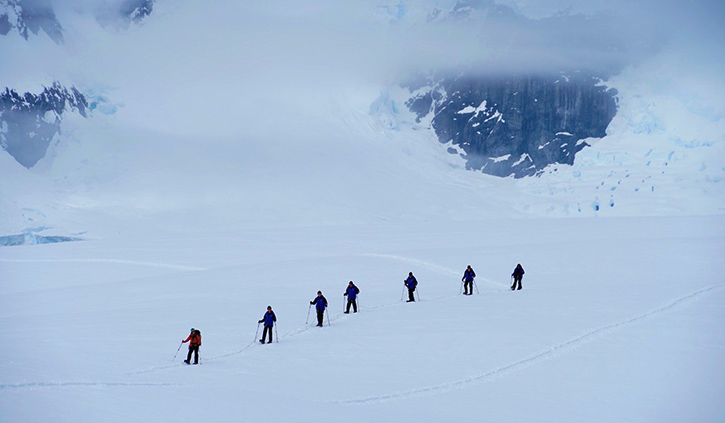
To make the most of any voyage, you should be in good general health and able to walk reasonable distances, sometimes over uneven terrain. However, if you have problems walking on rough ground, you can still enjoy the scenery closer to shore. Should you have any physical limitations please discuss with us before you book; generally this should not discourage you from participating.
All our ships are air-conditioned and the temperature ranges for 15°C to 25°C. You can control the temperature of your cabin by adjusting the airflow through the roof vent and turning your heater on or off.
On-board WiFi internet packages are usually available for purchase during the voyage. Telephone access for personal use is not available on board. In case of an emergency, all ships will have satellite phones.

The International Association of Antarctic Tour Operators (IAATO) implement strict wildlife guidelines that all visitors to Antarctica must abide by. On-board briefings will be given to all guests.
For all species you must keep at least 5 metres between you and the animal in question. Several species, like Giant Petrels, that are more vulnerable to disturbance, require greater distance (20 metres or greater).
It is recommended to relieve yourself on board before going on a landing but if the necessity arises ashore, you will be able to be taken back to the ship via Zodiac.
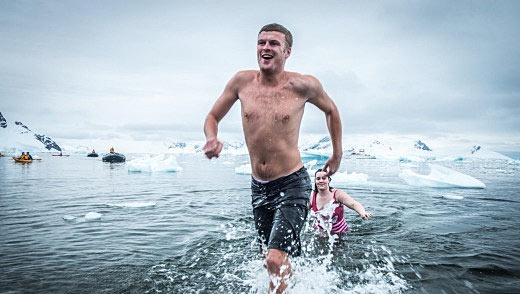
Although you cannot swim in Antarctica, most voyages offer a ‘Polar Plunge’, where all willing passengers can take the ultimate dip into the icy Antarctic waters.
In general, items that are not included in the cost of your voyage are: flights to and from your voyage (though some operators do offer charter flights within South America), pre- and post-accommodation, transfers, extra drinks from the bar, gratuities, Ship Shop items, laundry costs and other items of a personal nature (unless stated in your voyage inclusions).
Some voyages do include certain pre- and post-cruise travel arrangements, so please ask your consultant about specific voyage inclusions.
The on-board currency for the majority of ships is US dollars. All your on-board purchases including bar, laundry, ship shop, internet, and massages are charged to your shipboard account and settled by credit card or cash (US dollars only) at the end of the voyage.
Many people ask us if they will get seasick. It is a very difficult question to answer because it depends so much on the individual. Our experience is that a small percentage of people are seasick on any trip and most of these people are fine after a day or so at sea. If you feel that you are particularly susceptible to seasickness then it is a good idea to talk to your doctor. We advise you come armed with motion sickness tablets, and there will be a doctor on board to assist with any bouts of seasickness.
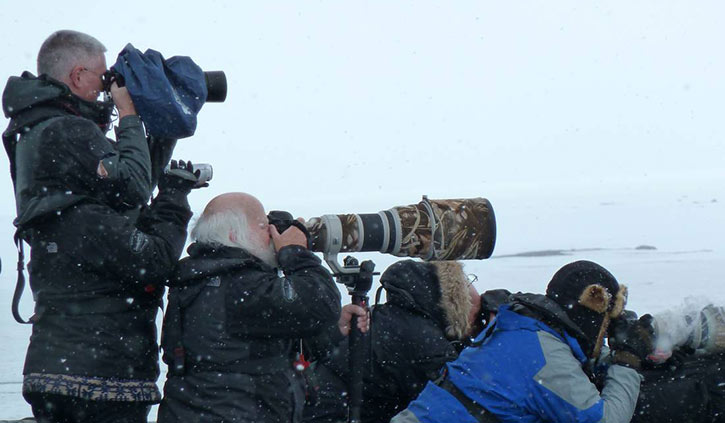
What gear you take depends on your goals and interests. If you have a DSLR and want to get closer to wildlife you’ll need a decent zoom a 70-300mm gives reasonable range as well as lessening the need to change lenses which can be challenging (i.e. in a zodiac you need to be careful not to get water into your camera). If you want to get much closer then a 400mm+ lens is useful (and they are large and heavy). The faster the lens the better. As in low light a fast lens will help get a crisp image. A wide angle lens – perhaps a 24-70mm would mean two lenses will give you a good range (a suggestion is to try not to have to keep changing lenses).
A point and shoot, or your Iphone, can also capture decent images. Personally I use a point and shoot whilst moving in zodiacs or for ‘quick shots’.
Be sure to have spare memory cards. Spare batteries and possibly a spare charger (as no battery means no images). if you do get salt-water on your camera be sure to rinse it in fresh water when you get back to the ship and allow to dry. The last useful item is a dry bag; to keep your camera(s) and lens(es) dry in less good weather or when in zodiacs (as with wind and just the movement of the zodiac there is often spray that can damage cameras).